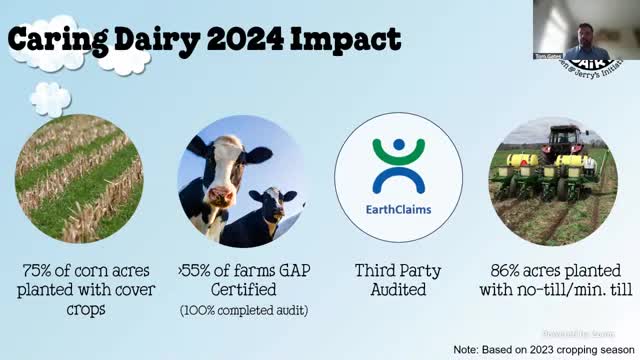Vermont farms achieve animal care certification and enhance sustainability practices
March 29, 2025 | Agriculture, Food Resiliency, & Forestry, HOUSE OF REPRESENTATIVES, Committees, Legislative , Vermont
This article was created by AI summarizing key points discussed. AI makes mistakes, so for full details and context, please refer to the video of the full meeting. Please report any errors so we can fix them. Report an error »

During a recent meeting of the House Agriculture Committee in Vermont, significant strides in sustainable farming practices were highlighted, showcasing the positive impact on local agriculture and the environment. Over 55% of participating farms have successfully completed third-party animal care audits, demonstrating a commitment to high standards in animal welfare. However, some farms are still working towards certification, primarily due to the capital investments required for compliance.
The meeting also emphasized the importance of sustainable farming techniques, with 86% of annual acres planted using no-till or minimum till practices. These methods not only enhance soil health but also contribute to reducing greenhouse gas emissions. A notable success story shared involved a farmer who, through collaboration with agronomists and the use of a nutrient management tool from Cornell University, was able to cut nitrogen fertilizer use in half. This reduction not only benefits the environment but also improves the farmer's bottom line.
The discussion included insights from a state soil health initiative, which found that participating farms outperformed the state average in soil health metrics, with the exception of soil hardness and compaction. This initiative aims to identify cost-effective strategies for reducing greenhouse gas emissions on farms, further underscoring the commitment to sustainable agriculture.
Despite challenges, including a decline in the number of farms, the Caring Dairy program has shown promising results. In 2022, nearly half of the 24,000 acres of cover crops planted came from farms within this program, indicating a strong community effort towards sustainable practices.
The meeting concluded with a focus on the resilience of local farms, particularly in light of recent flooding events. Farmers who adopted no-till practices reported significant soil preservation, highlighting the tangible benefits of sustainable farming methods. As Vermont continues to navigate the complexities of agriculture, these discussions reflect a community dedicated to fostering both environmental stewardship and economic viability in farming.
The meeting also emphasized the importance of sustainable farming techniques, with 86% of annual acres planted using no-till or minimum till practices. These methods not only enhance soil health but also contribute to reducing greenhouse gas emissions. A notable success story shared involved a farmer who, through collaboration with agronomists and the use of a nutrient management tool from Cornell University, was able to cut nitrogen fertilizer use in half. This reduction not only benefits the environment but also improves the farmer's bottom line.
The discussion included insights from a state soil health initiative, which found that participating farms outperformed the state average in soil health metrics, with the exception of soil hardness and compaction. This initiative aims to identify cost-effective strategies for reducing greenhouse gas emissions on farms, further underscoring the commitment to sustainable agriculture.
Despite challenges, including a decline in the number of farms, the Caring Dairy program has shown promising results. In 2022, nearly half of the 24,000 acres of cover crops planted came from farms within this program, indicating a strong community effort towards sustainable practices.
The meeting concluded with a focus on the resilience of local farms, particularly in light of recent flooding events. Farmers who adopted no-till practices reported significant soil preservation, highlighting the tangible benefits of sustainable farming methods. As Vermont continues to navigate the complexities of agriculture, these discussions reflect a community dedicated to fostering both environmental stewardship and economic viability in farming.
View full meeting
This article is based on a recent meeting—watch the full video and explore the complete transcript for deeper insights into the discussion.
View full meeting